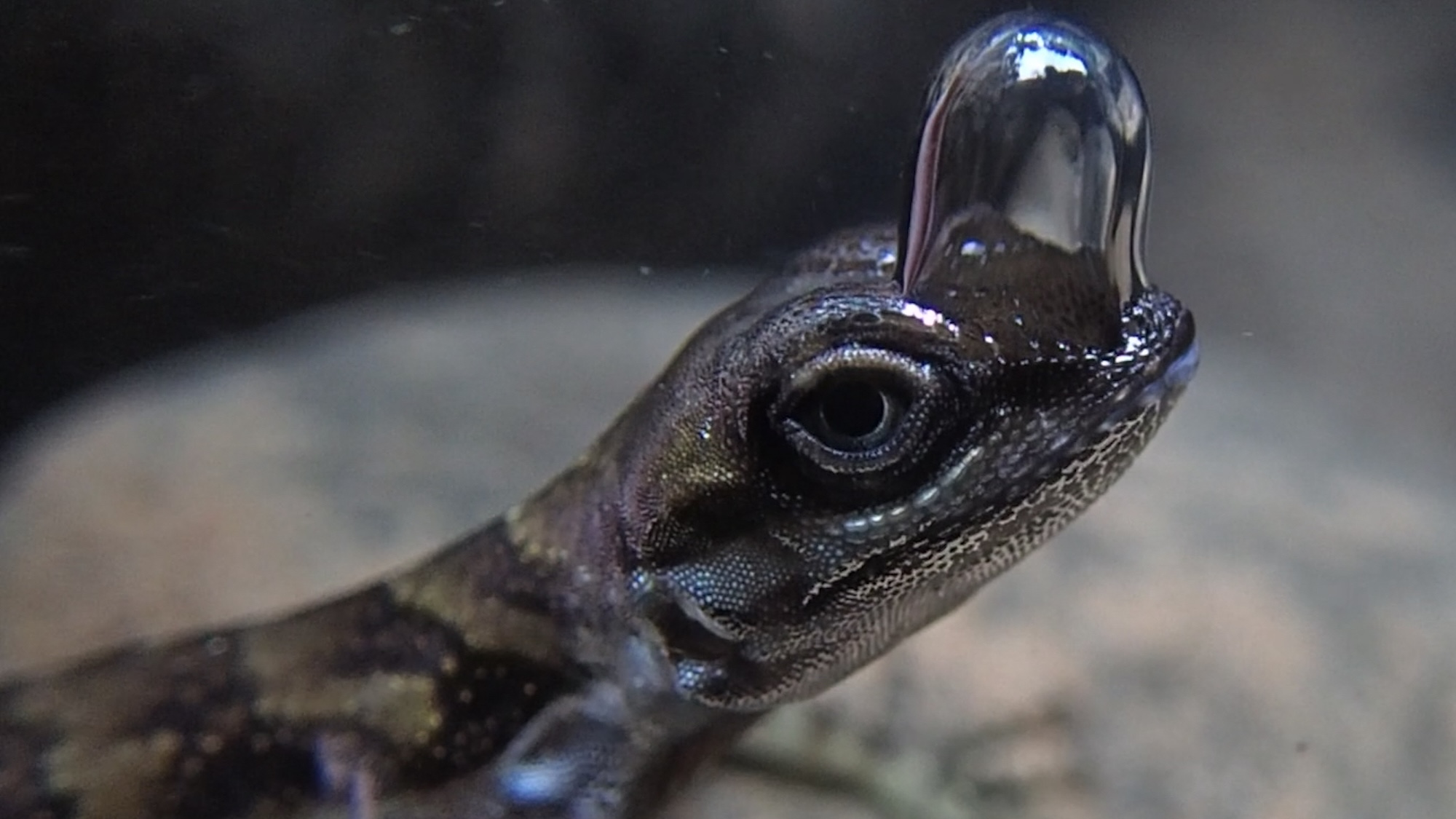

Animals have evolved all manner of methods to evade danger. For one lizard species living in the tropical forests of Costa Rica, their unique escape tactic involves a makeshift oxygen tank that allows them to hide underwater nearly as long as the Guinness World Record for a human holding their breath.
Researchers previously documented how the semi-aquatic water anole of southern Costa Rica will dive into nearby water when threatened by predators. But the anoles don’t survive to see another day by simply swimming away—they wait beneath the surface while drawing oxygen from a tiny air bubble that expands over their nostrils.

According to Lindsey Swierk, an assistant research professor of biological studies at Binghamton University, experts previously weren’t sure if the lizards intentionally leveraged these bubbles, or if they were simply the byproduct of having extremely hydrophobic skin which permits air bubbles to form underwater.
“We didn’t know whether there was actually any functional role for this bubble in respiration,” she said in a statement on September 17. “Is it something that lizards do that is just a side effect of their skin’s properties or a respiratory reflex, or is this bubble actually allowing them to stay underwater longer than they would, say, without a bubble?”

To determine an answer, Swierk divided a population of water anoles into two groups. Half the lizards were covered in an emollient that kept air from sticking to the skin, thus preventing the creation of any bubbles. The other group served as a control, and were allowed to function as they would in their natural habitat. Swierk then recorded and compared the underwater breathing times for both sets of lizards. The results, published on September 17 in Biology Letters, offer a clear answer to the mystery—on average, the control group lizards remained underwater around 32-percent longer than those who couldn’t utilize air bubbles.
[Related: Researchers want to unlock genetics of the world’s tiniest animals.]
“This is really significant because this is the first experiment that truly shows adaptive significance of bubbles,” Swierk explained. “Rebreathing bubbles allow lizards to stay underwater longer. Before, we suspected it—we saw a pattern—but we didn’t actually test if it served a functional role.”
In her observations, the anoles could stay underwater “at least about 20 minutes, but probably longer.” For comparison, the Guinness World Record for the longest time a human held their breath is 24-minutes-and-37 seconds. According to Swierk, it’s a skill that frequently comes in handy, given how lizards’ popularity among their predators.
“Anoles are kind of like the chicken nuggets of the forest. Birds eat them, snakes eat them,” she said. “They’re pretty well camouflaged underwater as well, and they just stay underwater until that danger passes.”
But after answering one question, Swierk is now onto another lingering anole unknown—as helpful as the air bubbles are, they likely aren’t large enough to contain enough oxygen on their own while hiding underwater. This implies that the reptiles’ tiny scuba tanks may also work as what’s known as a “physical gill.” More common among insects and spiders, physical gills occur when animals form similar bubbles underwater, all while allowing the water’s natural oxygen content to pass through the air pocket’s gas-permeable exterior. If so, it would reveal yet another complexity to the tiny anole’s innovative evasive maneuvers.